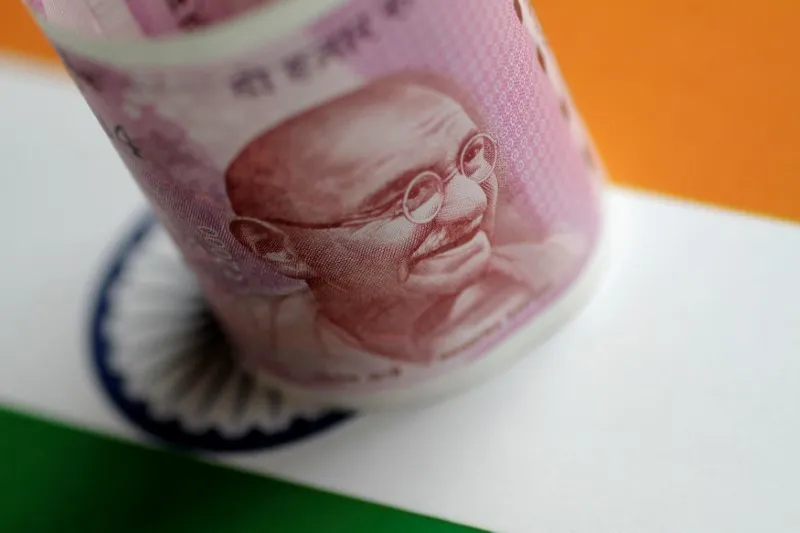
Rupee hits record low of 69.0950 per dollar
Traders say mild intervention from RBI helps stem fall
Further losses possible if RBI stays away - traders (Updates with details, fresh quotes)
By Swati Bhat
MUMBAI, June 28 (Reuters) - The Indian rupee fell to its lowest ever against the U.S. dollar on Thursday on the back of weak macro-economic fundamentals, broad dollar strength overnight and declining Asian peers, but mild intervention from the central bank helped stem losses.
Most other Asian currencies also edged down as a trade spat between the United States and China kept investors on edge due to its potential spillover effect.
The Reserve Bank of India is suspected to have sold dollars through state-run banks around 69.09 rupee levels, traders said, but they are hopeful of larger dollar sales to prevent sharper falls in the coming days.
The partially convertible rupee INR=D2 was trading at 68.93/94 to the dollar at 0802 GMT, after hitting a life low of 69.0950 earlier in the session, and sharply lower than its previous close of 68.65/66.
The rupee's last record low was 68.8650 per dollar, hit on Nov. 24, 2016.
The central bank is estimated to have sold about $700 million-$800 million, HDFC Bank (NS:HDBK) analysts wrote in a note.
"The fall in the rupee was led by higher oil prices and rising trade war tensions between US and China. In the near term, the rupee is likely to be under pressure as oil prices continue to remain high, capital outflows from emerging economies continue and trade war tensions keep markets jittery," the analysts said.
Things have gone from bad to worse for the rupee, Indonesian rupiah IDR= and Philippine peso PHP= after the benchmark 10-year U.S. Treasury yield posted its first weekly close above the 3 percent threshold in nearly seven years, a Reuters forex analyst wrote. rupee has shed 7.7 percent so far this year at its record low, making it the worst performing currency in Asia, followed closely by the Philippine peso. EMRG/FRX
"Weakening at this pace shatters confidence. Markets expect RBI to manage the currency more effectively. The pressure on INR is high, thus in the absence of major action from regulators, 70 levels can be seen," the head of currency and debt trading at a foreign bank, said.
"The RBI has been effectively managing (the rupee) over the years, and they do have ample firepower to manage sharp falls."
India's foreign exchange reserves stood at $410.07 billion as of June 15, latest data from the central bank showed.
The widening current account deficit (CAD) due to higher global crude oil prices and steady capital outflows have weighed on the rupee this year.
Oil prices have rallied for much of 2018 on tightening market conditions due to record demand and voluntary supply cuts led by the Middle East-dominated producer cartel of the Organization of the Petroleum Exporting Countries.
India's January-March CAD widened to $13.0 billion, or 1.9 per cent of GDP, from $2.6 billion, or 0.4 per cent of GDP, from a year earlier.
The rupee's fall, however, is expected to help exporters, though currency moves in other trading partners will also have an impact, especially with the Chinese yuan CNY= in retreat. of software service exporters such as Infosys INFY.NS rose 1.6 percent, while textile exporters such as Arvind Ltd ARVN.NS gained 0.7 percent.
"With the trade wars going on globally, export demand is not likely to go up immediately. Though technically exporters should benefit, the world markets are in a turmoil and people will wait for things to settle down a bit before booking new orders," said Pritam Kumar Patnaik, business head - Reliance Commodities Ltd.
Investors are now awaiting the fiscal deficit data INFISC=ECI from the government due to be released on Friday.
Despite the rise in CAD, it remains modest relative to GDP and is largely financed by equity inflows, including foreign direct investment, Moody's said in a note on Thursday, adding that the large foreign exchange reserves provided a good buffer.
"India's low dependence on foreign-currency borrowing to fund its debt burden limits the risk of currency depreciation transmitting into materially weaker debt affordability," Moody's added.